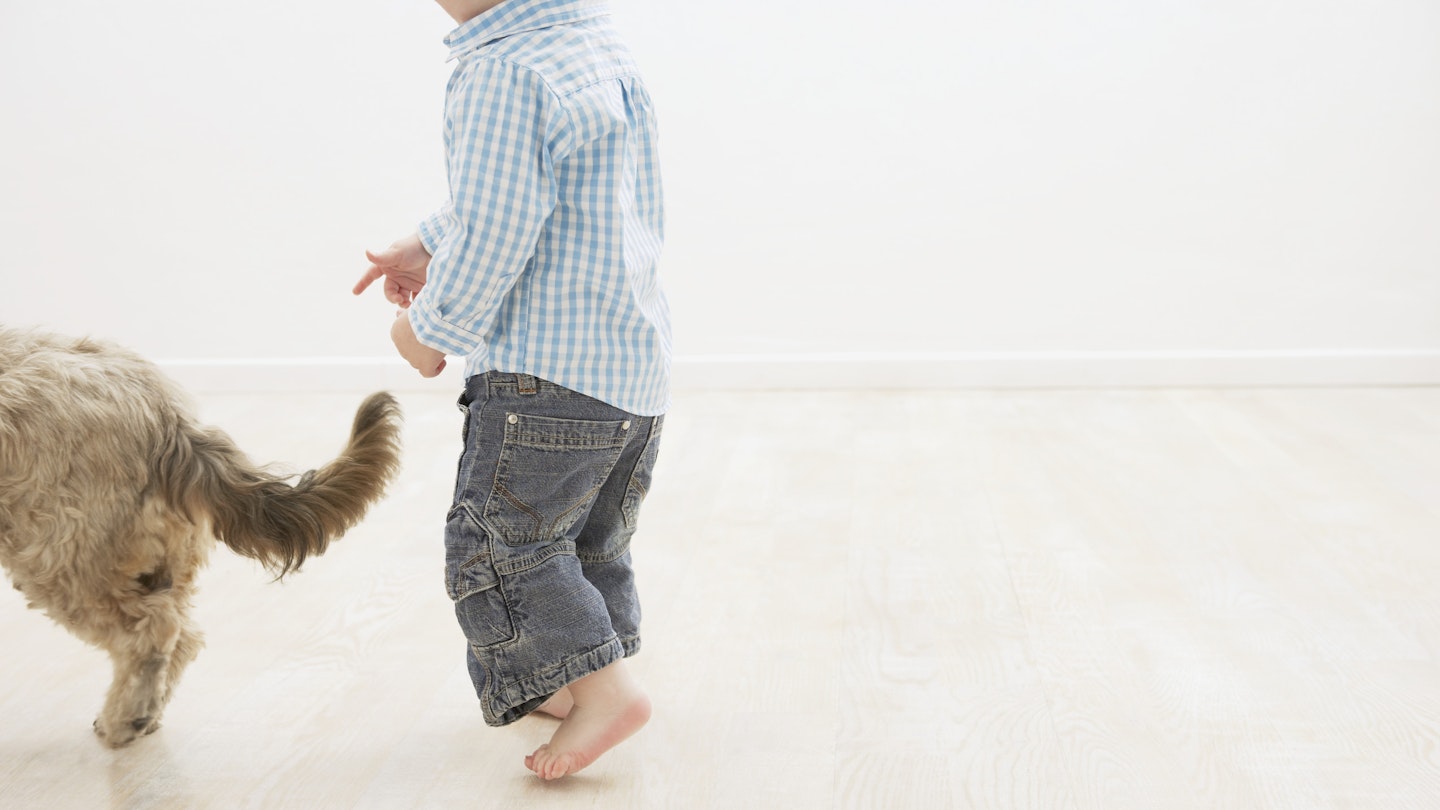Whether it’s that lovingly prepared dinner or the new feline addition to your family, get clued up on what’s causing your baby or toddler’s allergic reaction
Rashes. Sickness. Swelling. All potential signs of an allergic reaction in your baby or toddler.
It’s tricky when they’re also often associated with other things, so get clued up on what causes what – and how to deal with them.
Food allergies
Reactions to food can show up slightly differently in babies and toddlers. With young babies, the main culprits tend to be formula or cow’s milk.
>> READ: DOES YOUR BABY HAVE A DAIRY ALLERGY?
‘An allergy to those tend to show up through tummy problems or eczema,’ says Lindsey McManus, Deputy CEO of Allergy UK. ‘These can be caused by other things, too, but it’s worth mentioning to your health visitor or GP.’
In older babies and toddlers, look out for rashes, hives, generally feeling unwell, sickness and swelling of the lips or face, especially if your family is atopic – basically, has a history of allergies. Obviously get help immediately if anything interferes with your child’s breathing.
‘Try introducing foods one at a time, so you can gauge how your child reacts,’ says Lindsey.
If your child has a food allergy and you are going away to a non-English speaking country, perhaps take translation cards to use in restaurants.
Dust, pets and mould
These can all lead to respiratory allergies, where reactions are similar to hay fever symptoms – so things like a runny nose, itchy eyes and wheezing. They can also trigger eczema flare-ups.
‘Get your child checked out if these signs don’t clear up, as it could suggest something in the home is setting them off,’ says Lindsey.
A common misconception about pet allergies is that they’re caused by animal hair.
A common misconception about pet allergies is that they’re caused by animal hair
‘Actually, the allergens are in the saliva, skin flakes and urine – cat allergens are especially sticky so they get everywhere,’ says Lindsey.
Keeping parts of the house out of bounds for pets can help – so your baby’s bedroom etc – and there are products you can use on animal coats to keep the allergens down.
Toiletries and the home
If your toddler’s skin has suddenly flared up red, itchy or with a rash, look at household products.
‘For young children, keep it simple with toiletries – so no bubble bath or anything highly perfumed,’ says Lindsey.
‘And then with washing powder, go for a mild option (we have a list of ones with our seal of approval) and also follow the instructions on packaging – often the problem comes if too much has been used so it’s not all washed out properly.’
If your child does react to something, clean the area with warm water, stop using the product and see your doctor if it hasn’t gone down in a day or two.
The great outdoors
Whether it’s in the garden or on holiday, pollen reactions are usually similar to dust and pet ones – so itchy eyes, snotty nose, and so on.
>> READ: EVERYTHING YOU NEED TO KNOW ABOUT HAY FEVER IN TODDLERS
Although hay fever actually tends to affect older children more than toddlers, so these symptoms could be a reaction to another allergen or even because of a cold/cough.
Does your child have an allergy? Let us know on the comments board below.
